Samsung Q95T 4K QLED TV (QE65Q95T)
When 8K TVs really started to appear in earnest (and volume) last year, they were pretty unapproachable in price terms. This year, though, Samsung wants to make 8K more accessible, bringing in a range, the Q800TS, that costs pretty much the same as last year’s flagship 4K TVs.
It's worth noting that the Q800TS now has a successor, the excellent QN95A, which is far more than just an iterative upgrade with features like Mini LED backlighting to boost its picture. However, the Q800TS is still a solid purchase if this slightly older model better fits your budget.
What does all this 8K talk have to do with the new Samsung Q95T range? Well, the arrival of the Q800T 8K range has led Samsung to conclude that there’s no longer space in its range for a 4K TV as highly specified as last year’s Q90R 4K flagship models. At least when it comes to the key matter of how many separately controlled zones its direct LED lighting system deploys.
Before anyone gets too upset about this, though, the 65-inch Q95T is £800 cheaper than the 65-inch Q90R was, and boasts a new backlight power management system that might just rewrite the dimming zone rulebook.
- Best Samsung TV 2020: the QLED sets worth buying
Price and availability
The Samsung Q95T launched in mid-2020 and comes in four screen sizes that range in price from £2,299 to £5,999. The 65-inch QE65Q95TATXXU, reviewed here, is currently priced at £2,999, putting it in direct competition with the LG CX OLED and Sony A8 OLED that both come in at £2,799.
Design
The QE65Q95T is somehow both sleek and chunky all at the same time.
From the front, the frame around the screen is on-trend slim. Not quite as slim as the barely there frame around Samsung’s new flagship Q950TS 8K models, but narrow enough to ensure your gaze remains very much focused on the picture, not the machine that’s making the picture.
From the side, though, the QE65Q95T is chunkier than most TVs. This chunk extends across its entire rear uniformly, too; you don’t get any ‘bonus’ skinniness at the outer edges.
Strangely, the QE65Q95T’s slab-like profile is actually pretty fetching. Turns out that when you’re a telly, being as flat on the back as you are on the front is kind of cool. And there’s no cable spaghetti to worry about either, since the QE65Q95T ships with an external One Connect box that carries all of its connections. This box attaches to the screen via a single slim, light-coloured cable. (Note that in Europe you can get a version of the Q95T, the Q90T, that builds the connections into the screen and is around £200 cheaper.)
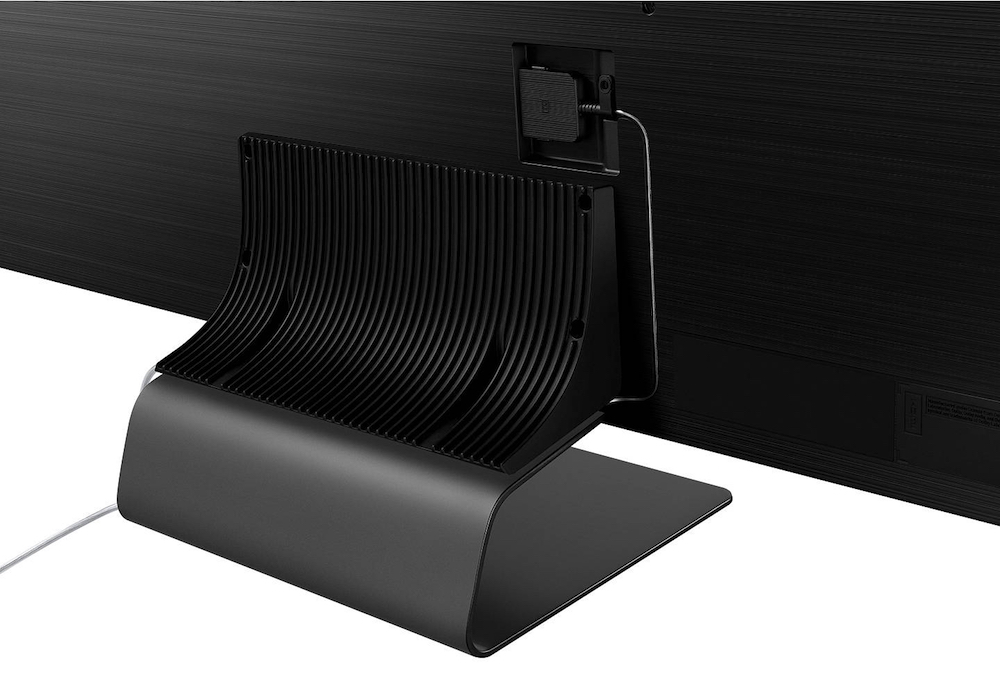
The 65Q95T’s One Connect box carries four HDMIs, three USBs, a digital audio output, and the usual tuner inputs. Plus, of course, the set supports both Wi-Fi and Bluetooth. In fact, the only headphone support is via Bluetooth; there’s no physical headphone jack.
One of the Q95T’s HDMIs is able to handle the sort of data bandwidths needed to cope with the 10-bit 4K 120Hz graphics we’re hoping (possibly optimistically) to get from the Xbox Series X and PS5 consoles. Which makes us think it would have been nice to get two high-capacity ports, given that there are going to be two next-gen consoles.
As with last year’s premium Samsung models, the QE65Q95T’s HDMIs support the key gaming features of variable refresh rates and automatic low latency mode (where the screen automatically switches into fast-response mode when a game source is detected).
The QE65Q95T’s seriously well-built (and heavy) screen ships with a thankfully similarly robust, centrally mounted metal stand. This approach is, in our opinion, preferable to using separate feet, since it means you don’t have to find such a big piece of furniture to place the TV on.
For people who don’t like the idea of a 65-inch TV leaving a gaping black hole in their room when they’re not watching it, the 65Q95T ships with an Ambient Mode. This can fill the TV’s screen with a digital photo, artwork or video screensaver of your choice, played in low power mode.
Design TL;DR: Although it’s not as svelte as many of its rivals, the 65Q95T’s immense build quality and monolithic profile make it a striking if imposing addition to your room.
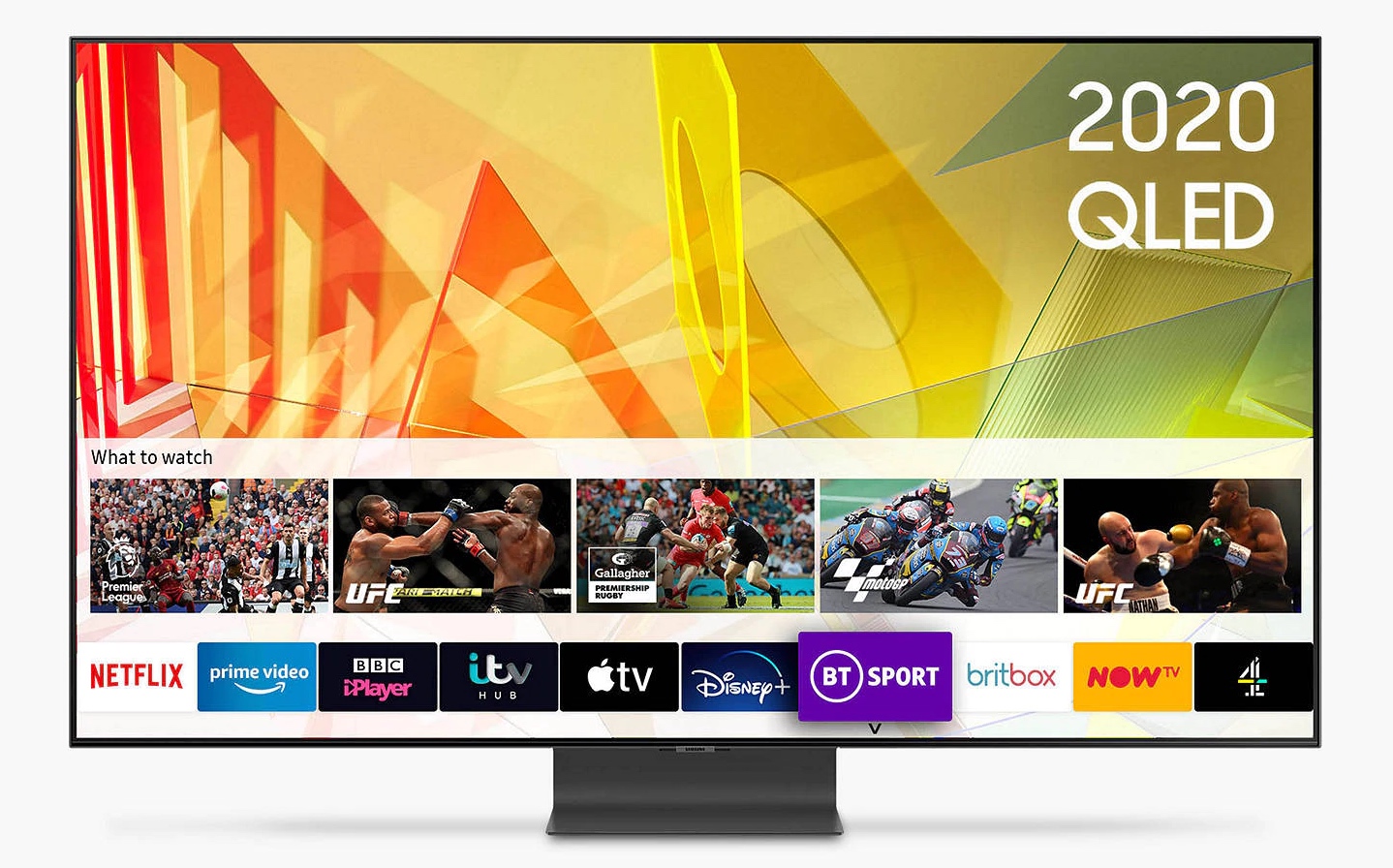
Smart TV (Tizen)
At first glance, Samsung’s proprietary Tizen-based Eden smart platform looks pretty much the same as it has for its past couple of generations.
Hitting the home key on either of the two remotes (one standard, one stripped back with a mic) you get with the 65Q95T calls up a tidy row of content link icons at the bottom of the screen that you just scroll along to reach the source you want. Most of the icons throw up a second tier of direct show/movie links when you highlight them, and the order the icons appears in can easy be adjusted to suit your preferences.
A big change for 2020, though, appears if you push down on your remote from the home screen. This takes you into handy, nicely presented new tiers of content, based on themes, sources and genres.
The choice of apps is huge too, at least when it comes to the sort of video streaming services you mostly want a TV smart system to provide. Netflix, Amazon Prime Video, YouTube, Disney Plus and even Apple TV+ are all there, along, of course, with all of the catch up apps for the UK’s key terrestrial broadcasters. The only pity is that these catch up apps can’t be corralled into the umbrella Freeview Play app like they can with most rival brands.
If you’re into talking to your TV, the Q95T supports built-in voice recognition using Amazon Alexa or Samsung’s own Bixby systems. Google Assistant is set to be added later via a firmware update, though this will require an external ‘listening device’.
The QE65Q95T supports 4K and HDR playback from any streaming apps that carry such high quality video. Note, though, that the HDR support only extends to the HDR10, HDR10+ (as used by Amazon Prime Video, predominantly) and HLG formats. There’s no support for Dolby Vision which, like HDR10+, adds extra scene by scene picture data to help compatible TVs deliver better HDR picture quality. The 65Q95T will still, though, play HDR in the baseline HDR10 format from platforms that offer content in Dolby Vision, such as Netflix.
Smart TV TL;DR: Despite not supporting Dolby Vision or Freeview Play, overall the Samsung QE65Q95T offers an impressively content-rich and easy to use smart experience.
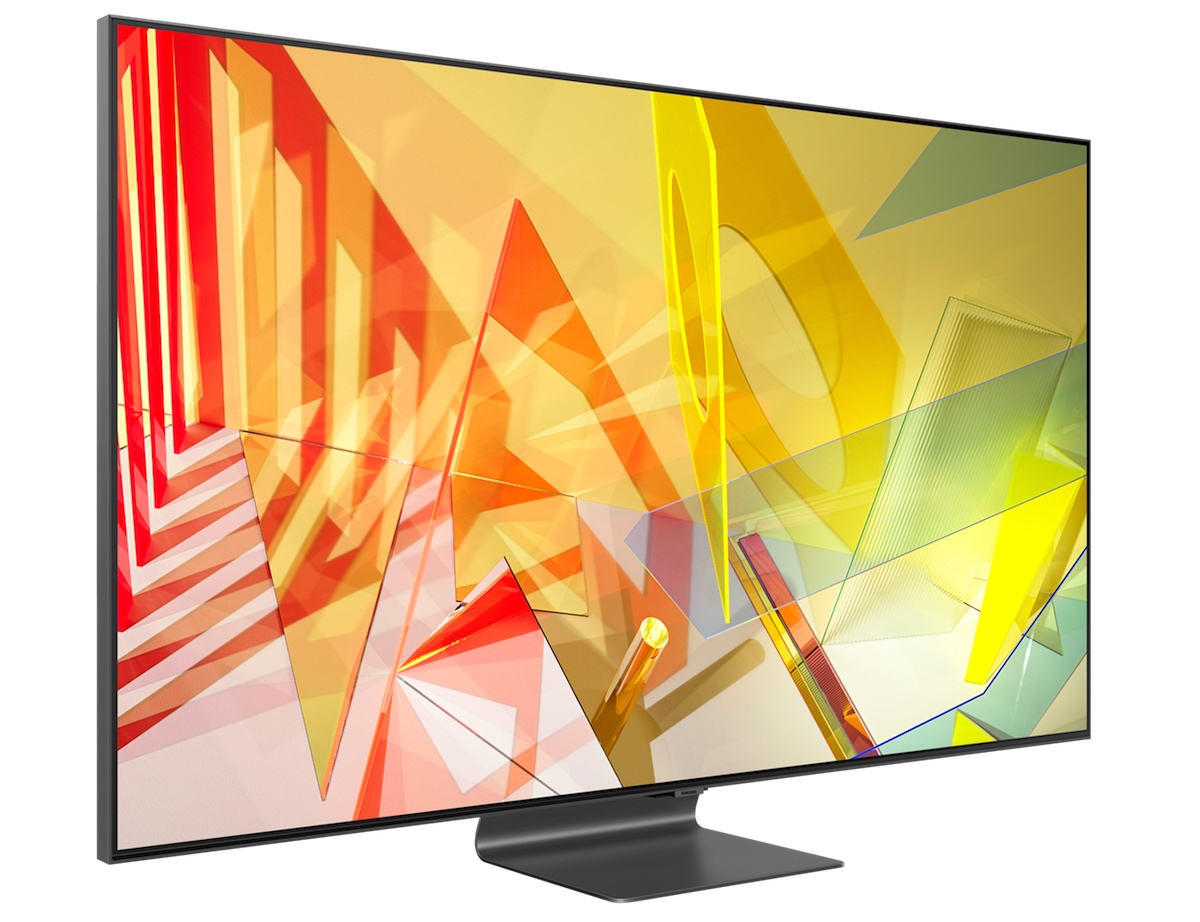
HD/SDR Performance
The QE65Q95T’s pictures are bolstered for 2020 by an improved video processor, and a new backlight control system that redistributes power around the LEDs more intelligently.
We’ll talk about the latter more in the 4K/HDR performance section, where it has more impact, but the new processor works extremely well when it comes to upscaling HD sources to the QE65Q95T’s 4K screen – the image looks denser, sharper, and filled with more genuine detail. Even better, these obvious enhancements are delivered without causing grain or source noise to become exaggerated, or harsh object edges to suffer with ghosting, even if you use the relatively aggressive Standard picture preset.
The sort of heavy blocking noise you get with really low-quality digital broadcasts is typically airbrushed away convincingly, too. This even makes watching standard definition sources tolerable. Not that this is not something we’d recommend you do on a 4K TV unless you really have no option.
Contrast while watching standard dynamic range content is excellent. Dark images benefit from black levels so deep it’s hard to believe you’re looking at a backlit LCD TV, yet bright highlights still look punchy and clean. Even better, despite the 65Q95T only having 120 separately controlled LED dimming zones (vs 480 on 2019’s Q90R Samsung 4K flagship), bright objects stand out against near blackness without being accompanied by distracting halos of light.
As you’d hope with such a good black level behind them, colours look great in SDR too. Lively but not over-bright (as long as you avoid the Dynamic picture preset), and full of balance and subtle toning.
A small amount of shadow detail can be lost from very dark areas unless you use the Movie picture preset, and die-hard enthusiasts should note that the set delivers its most effective results when running a bit brighter than strict SDR calibration rules would dictate. I don’t think most users, though, would consider this latter ‘issue’ to be a problem at all.
HD/SDR Performance TL;DR: Superb contrast and colour join with an exemplary upscaling system to make HD SDR content look uniformly excellent.
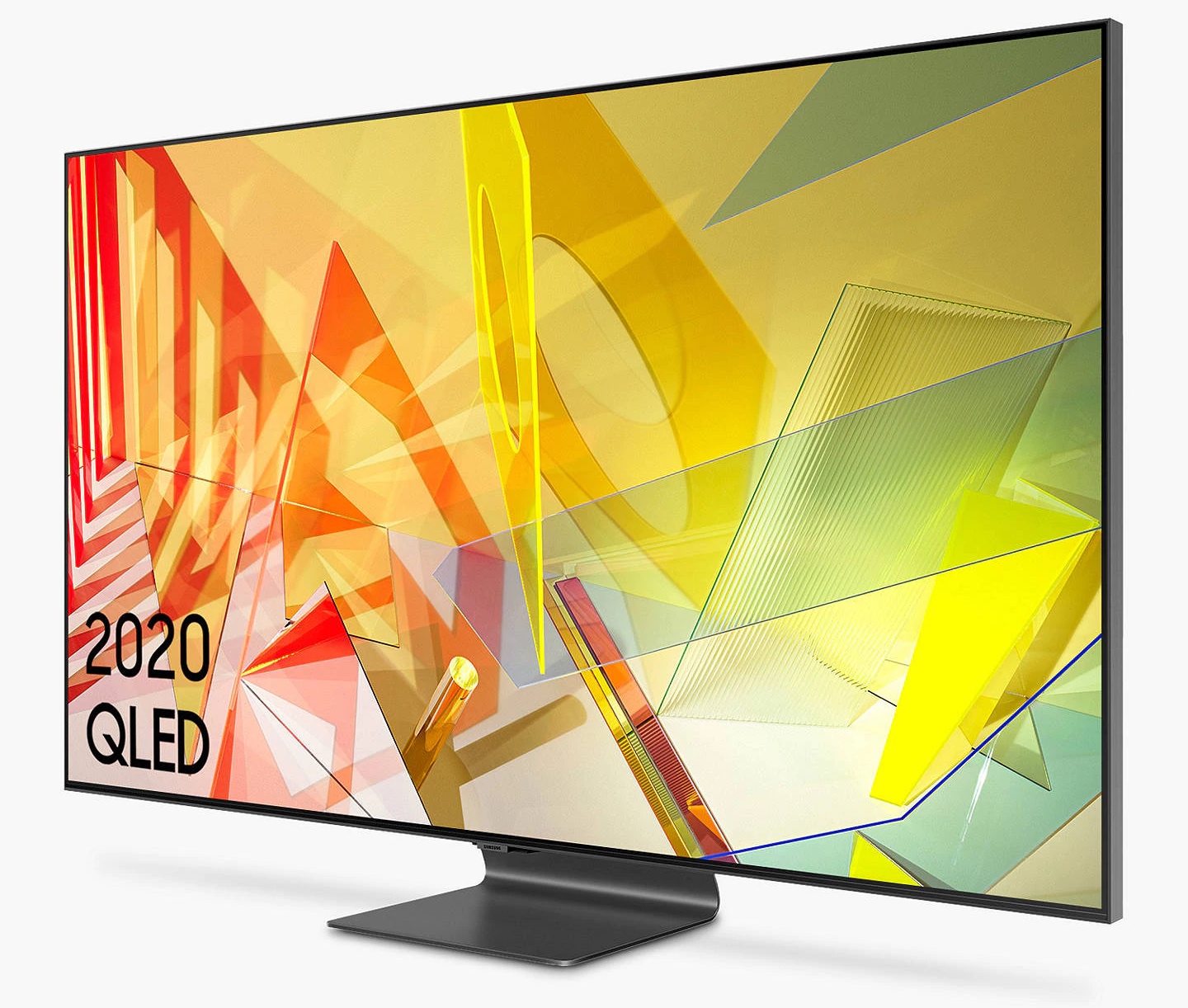
4K/HDR Performance
Great though the 65Q95T’s HD/SDR pictures are, the set is really designed to fly with 4K high dynamic range images. And fly it most certainly does.
For starters, it’s enormously bright. In Dynamic Mode it achieves brightness peaks of more than 2000 nits. This drops to around 1500 and 1300 nits respectively in the more all-round effective Standard and Movie presets, but that’s more than enough to ensure the 65Q95T delivers HDR pictures with exceptional punch and vibrancy.
Having so much brightness at its disposal also means that the 65Q95T can deliver huge colour volumes from the wide colour gamuts that typically accompany HDR’s greatly expanded light range. Add these radiant colours and high brightness levels to black colours that continue to look in HDR more profound than they have any right to on an LCD TV, and you’ve got a truly next-gen picture performance.
Samsung’s ability to deliver so much contrast so effectively with so many fewer dimming zones to play with versus 2019’s Q90R is surely down to the new backlight power management system mentioned earlier. This works by redistributing power from dark parts of the picture that don’t need it to bright parts that do, but don't worry, the QE65Q95T still keeps blooming around stand-out bright HDR objects impressively subdued. There is a very subtle and vague sense of slightly elevated brightness surrounding the most extreme content (such as the bright reds, whites and yellows against deep black seen on the home menu of the It 4K Blu-ray). But the blooming is so faint and so undefined in terms of where it begins and ends that it’s hardly ever a major distraction.
Or that’s the case, at least, if you’re watching the TV reasonably head on. The wide viewing angle technology Samsung introduced on last year’s premium LCD models has been tweaked for 2020 in response to concerns that it caused pictures to lose resolution. So while you can watch the QE65Q95T from a wider angle than typical LCD TVs before colour and contrast start to slide and backlight bloom becomes more noticeable, problems can start to creep in from around 30 degrees off axis.
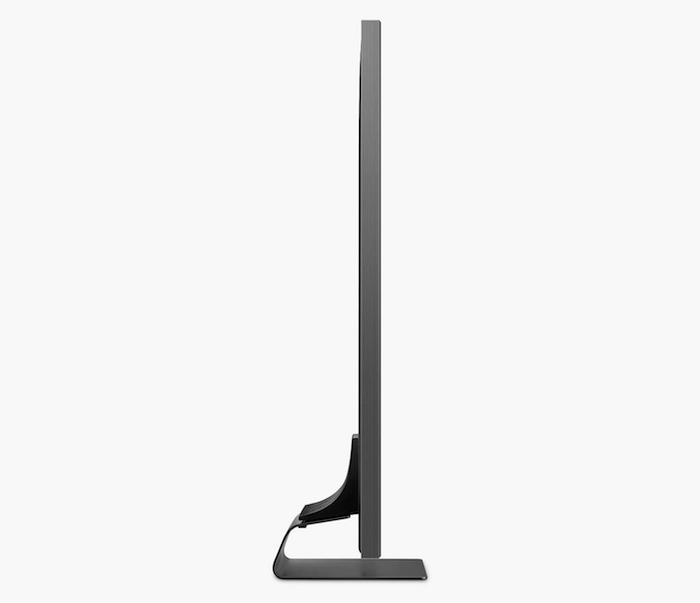
The viewing angle trade off looks sensible, though, when you realise how much sharper and more detailed the QE65Q95T’s pictures look than those of the Q90R. In fact, outside of the Movie preset, which deliberately goes for a slightly softer look, the QE65Q95T’s 4K sharpness is truly outstanding. Especially as it’s now not accompanied by the sort of shimmering noise and slightly gritty feel that we once used to see with Samsung TVs unless we softened their sharpness settings.
Motion is well handled too, so long as you select the Custom setting (which tends to cause quite a few unwanted side effects) and choose de-blur and de-judder settings of less than five.
Samsung even provides a new motion option in its Game picture preset that retains a low level of motion processing while keeping input lag (the time the TV takes to render pictures) to a very respectable 25ms. Hardcore gamers, though, may be unable to resist the allure of the incredibly low 9.4ms of lag the TV delivers in its ‘straight’ Game mode.
Samsung also provides a handy option that can make dark parts of Game pictures brighter without impacting bright areas, helping you pick out hidden enemies more easily. Note, though, that activating Game mode turns off quite a bit of the QE65Q95T’s backlight control system.
That said, the QE65Q95T can also lose track of subtle details and shades in dark areas, and as light objects within dark shots lose brightness thanks to the effects of the local dimming, their colour intensity/naturalism can reduce too.
All of these issues are reduced if you use the Movie picture preset - but this also makes black levels shallower and delivers a generally less dynamic image.
4K/HDR Performance TL;DR: Bright, colourful, contrast-rich pictures often look explosively good with HDR content. Sharpness levels are improved from last year’s Samsung 4K flagship, too. The backlight control system can be quite aggressive with extreme contrast content, though.
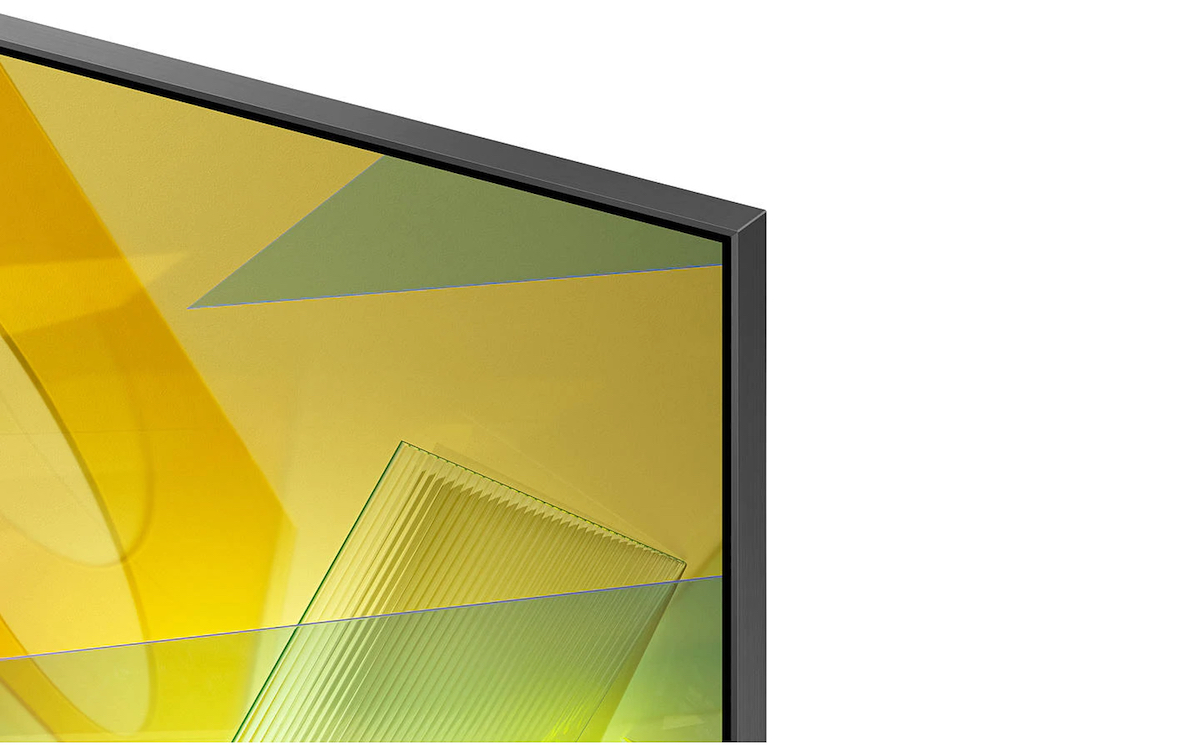
Sound
The Samsung QE65Q95T carries a new feature for 2020: Object Tracking Sound. This uses speakers built into the TV’s top and bottom edges to both create a larger soundstage, and position sounds more accurately. So, for instance, if there’s a car onscreen doing donuts, you should hear the sound circling around with the car.
The system works pretty well. The sound projects a good distance from the screen, and unlike last year’s Samsung TV sound systems, it also seems to come mildly forwards into the room, for greater immersion and impact.
Sounds – especially vocals – really do seem to be coming from somewhere at least close to the correct part of the screen. There’s none of the sense you sometimes get with big TVs that the sound is all coming from somewhere below the picture. There’s enough power, too, to bring out plenty of detail, and while bass levels aren’t immense, the mid-range is wide and nimble. The QE65Q95T’s speakers pull all this off, moreover, without distorting or collapsing.
The OTS effect isn’t quite as accurate and the general levels of clarity aren’t as high as those you get with the premium speaker system built into Samsung’s Q950TS 8K flagship sets. But that’s hardly surprising given that the Q95T is half the price of its 8K sibling.
Sound TL;DR: The Q95T’s powerful, precise sound does the bold and beautiful picture proud.
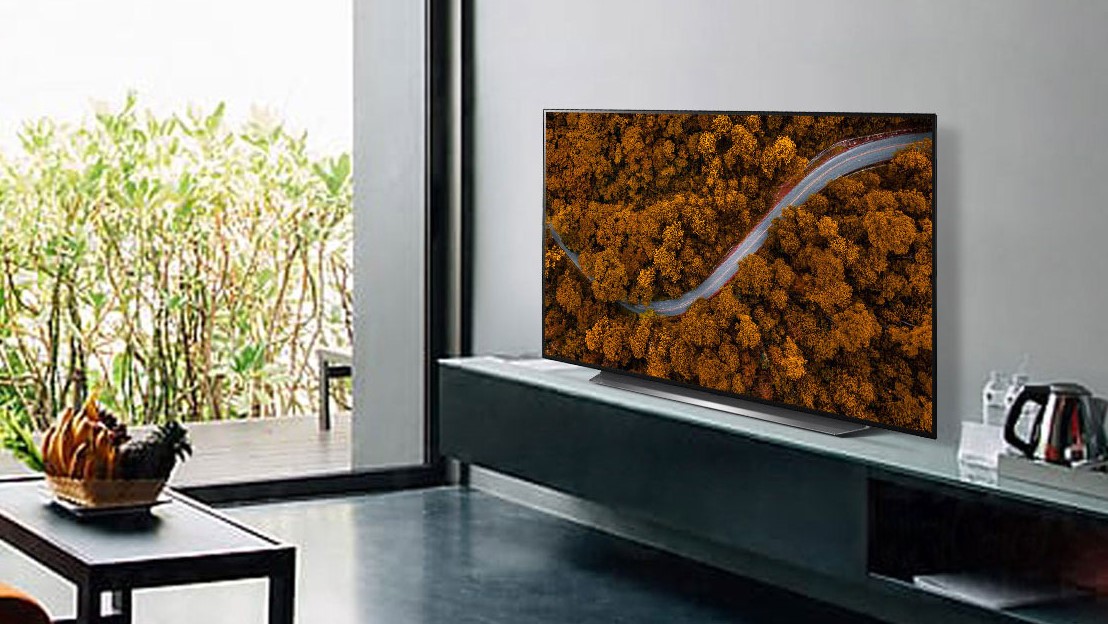
Other panels to ponder...
You can, if you’re quick, still pick up last year’s Samsung 65Q90R for the bargain price of £1900. This 2019 4K flagship gives you more dynamic backlighting and colour, but its pictures aren’t as sharp, and its sound system is less powerful.
It’s also possible to pick up a number of OLED TVs for around the 65Q95T’s price point if you prefer that technology’s self-emissive contrast and wide viewing angles. This year’s LG OLED65CX is around £2,800.
We haven’t had chance to review that one yet, though, so if you want to go with a tried and tested model, 2019’s LG OLEDC9 is still around at the time of writing for just under £2,000. But as with the 65Q90R, if you’re going to go for the older C9, you’d better get your skates on.
Final verdict
Once you get over the fact that the QE65Q95T isn’t as highly specified as Samsung’s 2019 4K flagship TV, it’s actually still an outstanding set. For most of the time pictures look gloriously sharp and vibrant, especially with HDR, and the new OTS system takes Samsung’s sound game to a whole new level.
- Expect to see the Q95T on our list of the best TVs of 2020
0 comments:
Post a Comment